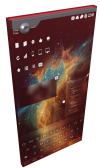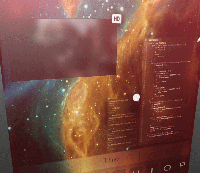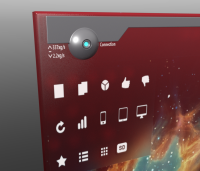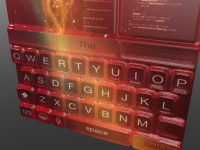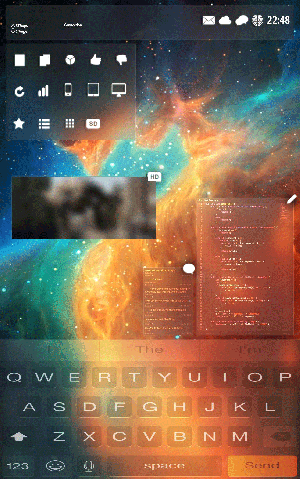Table of Contents
Lazarus Consortium Data Slate
Issued with the Laplace OS and Construct intelligence, the Consortium Data Slate is widely used by Consortium members and is now available for public use. Able to bend, change shape, torn, split, self-heal and repair and even be sculpted to transform into an array of simple tools, the data-slate is designed with modularity, form and legal deniability in mind.
Able to be worn as a watch, used as a phone, tablet, laptop, pocket-watch even have a portion removed to form glasses or visor, the device is designed to be linked via quantum modem to a much larger computer, acting as a window and a voice commanding a larger computational power.
The device has been in use within the Lazarus Consortium since YE 34 and was made available to the public for a 1000 KS in YE 38
About
While the consortium makes a wide use of constructs, there are times when outsiders contracted by the consortium are needed to access the consortium's resources. Furthermore, there are times when a construct either needs resources external to itself or to hand off resources to a contractor.
For this purpose, the data-slate was developed. In a nutshell, the device is a silver clip of hard components (such as the power-pack and a very small hardlight projector) and a combination of structol and quasicrystals which act as a combination of central processor, local memory, solar collector, case and display.
Description
The device itself is not limited to a given form-factor: able to changed in shape. Phone, tablet, watch, micro-deck, keyboard, netbook, and other wearable forms are all possible. The majority of the device's body can be thought of as an intelligent clay like substance wrapped around separate modular components which are added by hand. Doubling as the battery, the clay can form complex mechanical components with varying levels of elasticity (like keyboards, buttons, simple joysticks and even a screwdriver). The clay can also change its color with a contrast and color depth close to that of most consumer mobile devices forming tactile responsive screens over any surface in any shape, order or layout.
Importantly, the clay can also be removed in parts to create peripherals: Sensors, input devices, even independent units: all possible. It can also be regrown if reduced in mass simply using a purified water and graphite solution which the user can mix themselves. The clay powers itself by using electromagnetic pickups inferior to those found in quasicrystals but sufficient to drive the clay itself. These also serve as sensors, picking up contact, heat and light allowing the device to see.
While the Data Slate can function at its most basic using solely the base material, the rest of the device is usually composed of more permanent components, usually no larger than common coins.
Optional peripheral units include:
- A high capacity battery
- Off the shelf specialist sensors
- Portable volumetric projector, often used to create a larger display (very common)
- Most any off the shelf micro-processors for improved or specialist computation (the device adapts accordingly)
- Radio-transmitter, removed from common mobile devices
- Subscriber identification module, allowing it to use local data networks
- A quantum modem, allowing it 1:1 access to outside resources
- Portable neural device (as an accessory)
- Most any digital component or device: the clay acts as a motherboard.
Design
The clay, probably the most interesting component, is the real guts of a Consortium data-slate. Engineered from a lobotomized “safe” form of structol which does not have free-replication behaviors, the clay is not made of one main mass as structol ordinarily is but tiny microscopic ball bearings of quasicrystals. They lock together using both mechanical force and the same electrostatic forces behind a chemical bond. This allows them to lock or unlock from each other and even vary the angle of the lock and even move over each other akin to a train on tracks to create very complex shapes: Ordering themselves like a giant massively concurrent microscopic game of snake to form circuitry, a display and chemical energy storage.
In doing so, the device can create physical keys to type with and moving parts similar to a trackpad or control-stick, emulating a wide variety of different input devices.
Quite importantly, while the device seems flexible this is an illusion: It is not flexing but instead 'choosing' to move in the suggested direction and is hard at all times, an illusion that could be considered analogous to the way that water can occupy a space and appear a solid but remain a liquid.
While the construction of the Data Slate is more complex than that of a typical personal communication device, it's functions are largely the same. Particularly one can expect that any locally stored information or functions will continue to function as long as the device as not been physically damaged beyond recovery. To this end even if isolated from external signals, the device will continue to operate in much the same way that a more traditional communication device would unless physically disabled or ordered to self terminate by the user.
Operating System
By default the device runs Lazarus' own "Laplace" LA+ Operating System: a Construct intelligence based Operating System. LA+ excels with networked intelligence platforms - a broad classification describing everything from workstations, power-armor, advanced robotics, ships and even star-bases. As a direct result, the device cannot only issue human-like responses to human-like questions over AI driven queries and actions but it can also interface with software aboard almost any functioning platform - given that the slate can create almost any connection port, cable or plug to interface with.
Apps include…
- Physical Social Networks
- Augmented reality/Reality Recognition
- Personalized Guides
- Cash Card
- Biometrics/medical scanner
- Technical/Radiance scanner
- Printable carbon business cards, tags, sticky notes, labels - all digital solar-powered displays
- Printable 'memory card' for data sharing
- Printable 'driver card', acting as a 'smart' interface for otherwise 'dumb' equipment
- Physical Browsing & Digital Shopping
- 'Simple surgeon' hardlight surgeon (press device over wound)
- Form simple tools, equipment (hammer, spanner, screwdriver, wrench, etc)
Jailbreaking
In order to provide function or compatibility outside of its default state, distributions of PANTHEON and RICE OS can be installed onto the device over LA+ or it can be multi-booted. In addition should an end-user desire to, they can with some effort cut the device out of the Lazarus Communication Network allowing the hardware, and software to be used outside of the umbrella of Lazarus information networks.
User Recognition
The device can share user-preferences across the consortium network - meaning whenever a user picks up a slate, the user is recognized and the device acts as they would prefer it to with the preferred UI layouts and form-factors: effectively becoming their slate.
The device achieves this through initial barometric recognition through finger-prints and aesthetic/audio and chemical assessments and within a few seconds (taking a while), genetic recognition.
Deniability
The device can be destroyed remotely, the clay self-destructing effectively into sand or ash. Internal components can also be destroyed with a high voltage exchange, overheating and burning the components which glow hotly before breaking away into dust or melting down into liquid.
Since the data of the device can be stored in the consortium cloud thanks to the quantum modem, all the user has to do is pick up another device, authorize the exchange of special information and the device is essentially theirs as if nothing ever happened.
OOC
Created 2015/05/29 14:35 by Osaka/Osakanone Finished by Eistheid Approved 2016/01/21 19:54
